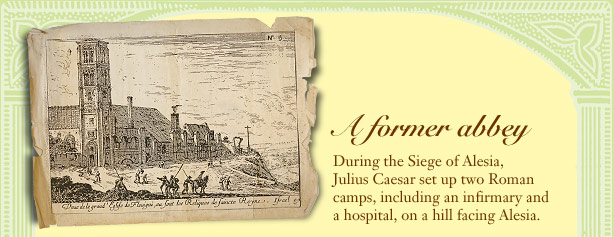
Flavinius the Roman...
In 52BC Vercingetorix, a Gallic chieftain, was leader of a rebel army against Julius Caesar. When Vercingetorix and his army fell back upon Mount Auxois, Caesar established defensive lines completely surrounding the oppidum, and defeated the head of the Gallic armies. During this campaign, one of Caesar’s encampments was pitched on the hill at Flavigny. When the Roman armies left, the land at Flavigny was given to Flavinius, a Roman army veteran who left his name to the town – Flaviniacum. The first settlement at Flavigny is likely to have been a villa, even though no archaeological record of it has been found. In this period of history, a villa was a farm complex including living quarters, outbuildings and lands for cultivating.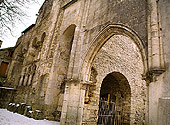
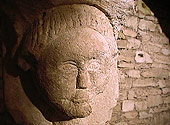
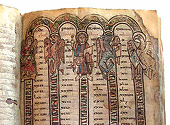
A Benedictine Abbey
The Abbey of Saint Peter was founded in 719 by Wideradus, son of Corbon, chief of the Burgundians (a Germanic-Scandinavian tribe). The daily routine of the abbey’s monks was governed by the Rule established by Saint Benedict of Nursia in the sixth century. Their time was divided between prayer, manual labour and intellectual endeavours. The Rule established by Saint Benedict of Aniane in the ninth century was applied to all monasteries by Louis the Pious, son of Charlemagne. A charter which is said to be signed by Charlemagne, although the authenticity of this document is now a source of contention, shows that the monks of St Peter’s practiced laus perennis from the 8th century onwards, a tradition of prayer wherein psalms are constantly sung day and night in the monastery chapel by relaying choirs of monks. In this period the abbey was also home to an important scriptorium. This word comes from the Latin words for ‘writing’ and ‘writer’. It refers to the workshop where the monks (acting as scribes) copied out manuscripts by hand, before the invention of the printing press. In continuous use throughout the middle ages, the Abbey gradually became neglected until the arrival of the Maurist monks (monks from the congregation of Saint Maur). When they arrived in Flavigny, they doubled the number of monks living in the monastery to a total of twelve. They carried out major restoration works on the Abbey, one example of which is the building which now houses the factory’s welcome area.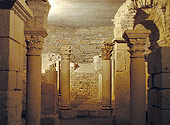
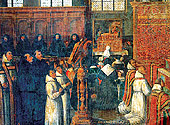
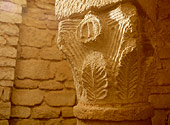
The end of the monastic community
By the time of the French Revolution there were only five monks left in the abbey. The estate was split up and sold off as private property, and the monastic buildings were partly taken over by the Anis factory. By 1814 Flavigny had eight Anis manufacturers, working in the abbey and the village to make the sweets previously produced by the monks.Jacques Edmond Galimard gradually bought out the village’s other producers to form one unified Anis factory, based in the former abbey. In 1870 20 tons of Anis de Flavigny were produced. By 1900 production had risen to 30 tons. By 1910 this number was 50 tons, available all over France and already being exported.
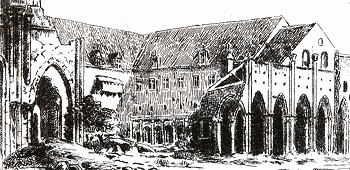
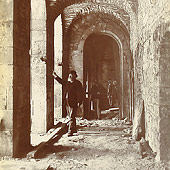
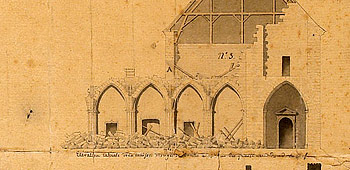
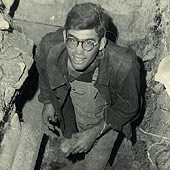
In 1814, there were eight manufacturers of Anis who had taken over from the monks in the production of the candy in the village and in the abbey. In 1846, the candy turbine replaced the antique “shaker”.
Gradually, a single manufacturer, Mr Jacques Edmond Galimard, bought out the village’s other Anis factories to form a single one within the former abbey.
In 1870, 20 tons of Anis de l’Abbaye de Flavigny ® were manufactured; in 1900, 30 tons;
in 1910, 50 tons, distributed all over France and already available for export.
And today like yesterday, thanks to the know-how inherited from the Abbey’s monks, the factory’s entire team is driven by the same desire to make Anis de Flavigny ®.
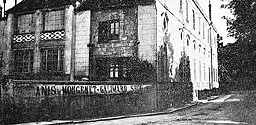
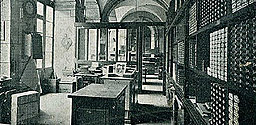
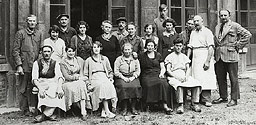
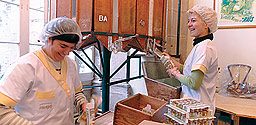
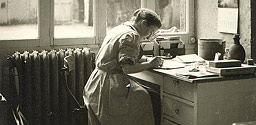
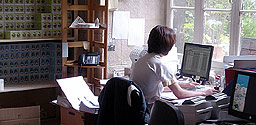
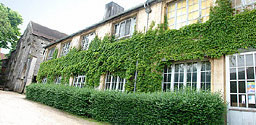
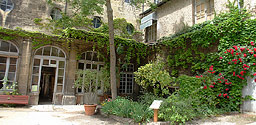
To find out more...
You can download the signs from the visit of the Abbey crypt in Flavigny:
Flavigny: 2000 years of history
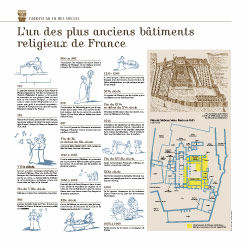
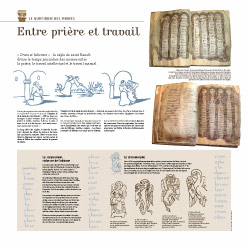
The abbey over the centuries
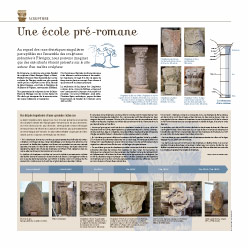
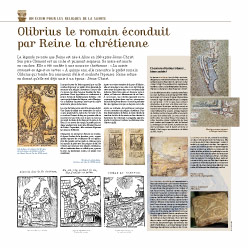
A pre-Roman sculpture school



At the heart of the crypt / Memoires of F. Guggenheim / Restoration of the Carolingian pillar



